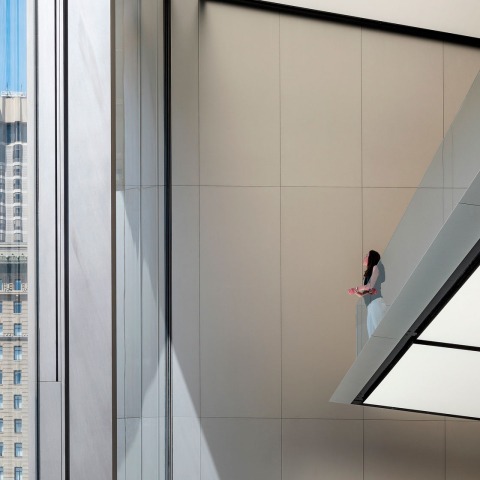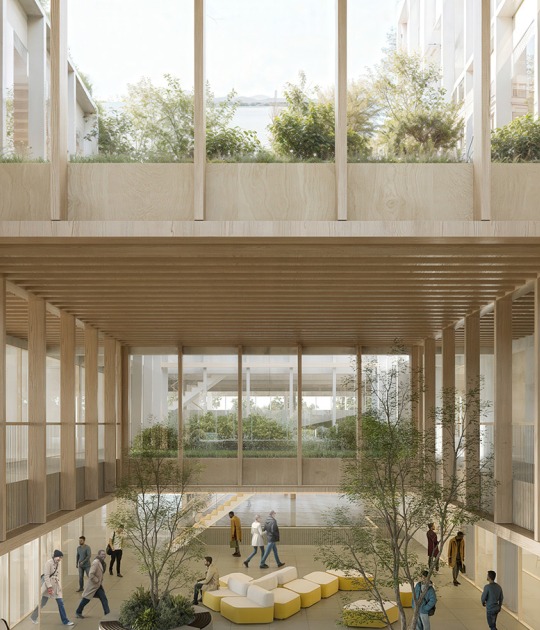A 6K-resolution video wall, a 50-foot-tall green wall in an art-filled plaza, and photovoltaic solar panels integrated in the store’s roof—the environmentally conscious location is powered by 100 percent renewable energy. The gleaming, two-story steel cube, with its monolithic, 42-foot-tall sliding glass doors, was devised by architecture firm Foster + Partners.
The entire structure of the building is quietly supported by a giant steel truss that bridges over the Grand Hyatt Hotel ballroom below. In turn, this supports further that trusses create the tapered ceiling shape and integrate the network of services throughout the building. Vertical bracing is neatly tucked away inside the spine and side walls. Seismic engineering design principles guided every aspect of the structural design, setting the standard for innovation and performance. The generous 40 foot-high (12-meter) volume is divided horizontally by a dramatic cantilevered mezzanine floor which tapers to less than 1 foot (30 centimetres) and extends 32 feet (10 meters) from the rear wall to create a 16 foot-high (4.9 meters) piano nobile. The extremely slim column-free floor structure is made possible by tuned mass dampers to eliminate vibration. The impression is of a floating stage in the center of the space in dialogue with Union Square, creating a spectacular living room for the city.
The Apple Union Square introduces five new features.
- ‘The Avenue’ is a specially designed area for the display of accessories incorporated into the central spine wall.
- The ‘Forum’, a new learning environment, where specialists from various fields come to entertain, inspire and teach, will occupy a prime central position on the mezzanine against a vast video wall which will also act as an animated backdrop for Union Square beyond.
- To the rear of the Forum is the ‘Genius Grove’ with a more relaxed setting amongst a small grove of trees, each within a single planter that doubles as a comfortable place to sit and rest while an Apple Genius answers any questions. The unique design of the tree planters was a collaboration between Foster + Partners and Apple’s Industrial Design Studio.
- The Plaza. Apple has connected its Union Square store with the surrounding community with The Plaza, an outdoor area open 24/7 and featuring a 50-foot green wall, public Wi-Fi, seating for 200 people, and a fountain created by sculpture artists Ruth Asawa. Apple says the space will feature live acoustic performances.
- The ‘Boardroom’ – a place for meetings, conversations and partnerships for local entrepreneurs and enterprises is discreetly placed behind the green wall.




























